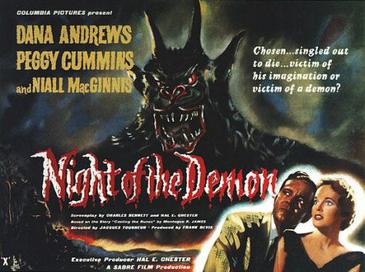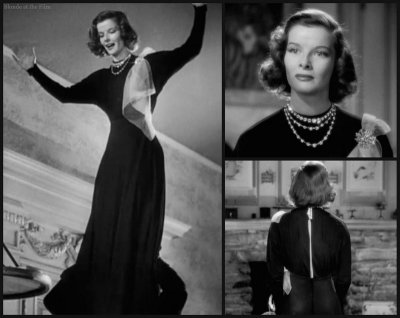History
Carl Laemmle was not the biggest fan of horror films despite all the money made from Lon Chaney's masterful horror silents. But it was his son, who got the studio for his 21st birthday, had his sights on making a big budget adaptation of Bram Stoker's
Dracula. Unfortunately the plans were scrapped as The Great Depression got progressively worse. Instead of the novel, Carl "Junior" Laemmle Jr. had to make due with the 1924 stage play. Both Hamilton Deane, the playwright and Stoker's widow would receive $40,000. It also helped that the man who managed to convince Florence Stoker to sell had ambitions to play the title role which made him look even better to Universal.
The Hungarian actor Bela Lugosi had been playing the Count for 265 performances on Broadway and a national tour which made more than enough sense to achieve the coveted role. But Laemmle was not impressed, considering Paul Muni, William Courtenay, John Ray, Chester Morris, Ian Keith, Arthur Edmund Carewe, Joseph Schildkraut, anyone but Lugosi. When in Los Angeles on that same tour, Lugosi lobbied hard against Universal and came out with the role with a salary of 500 a week. Edward van Sloan and Herbert Bunston also recreated their stage roles as van Helsing and Dr. Seward respectively. Lew Ayres was considered for John Harker before David Manners was cast.
Tod Browning, whose expertise laid in the odd and supernatural, was hired for his first film with Universal after having been laid off for his alcoholism. It was poor timing considering Browning's close friend and frequent star in his films, Lon Chaney, had just passed away that same year of throat hemorrhage 7 weeks after their last film, "The Unholy Three" (1930), was released. Shooting began September 29, 1930 and ran until November 15, but retakes and additional scenes set the film back until the January of the following year costing $314,191.20 under its initial budget of $355,050. Browning was not like his usual meticulous self as David Manners (John Barker) described the set as "extremely disorganized." When asked what it was like to work with the director, Manners described the experience as "It's funny you should ask. Someone asked me the other day who directed and I had to say, I hadn't the faintest idea!" and that "the only directing I saw done by Karl Freund, the cinematographer." (
Dracula (1931) - Articles - TCM.com)
Freund has been wrongly credited with shooting the Spanish version as well, but the directing credit had been given to ex-actor and non-Spanish speaking George Melford, who directed Rudolf Valentino in "The Sheik" (1921) to great success. His name was also on the Spanish version of "The Cat Creeps" that same year, proving himself capable to translate American films for the Spanish nations. Shooting began October 10, as the Laemmle production was only 11 days old until November 8, 1930. The shooting day for Melford and company began when Browning's ended in using the sets at night, this having been an established set up for Universal since the beginning of sound films.
The cast was inclusive to all Spanish speaking nations. Barry Norton (Harker) was Argentinian, Lupita Tovar (Mina/Eva) was Mexican and the title role was given to Spanish actor Carlos Villarìas. Villarìas had special privilege to watch the rushes of Browning's film as Universal continued to encourage him to imitate Lugosi. Tovar recounted to the authors of Universal Horrors:The Studio's Classic Films 1931-1946, "We didn't know any better, and everybody was happy to get a job. Most of them had been having little parts in silent films, and many of them had even played extras, even though they had a name in Spain and Mexico."
The Spanish version would open in Cuba on May 11th, 1931 then in New York on April 24th. Despite the Studio's nerves of how the public would receive a less comedic horror film, Browning's "Dracula" premiered at the Rosy Theater in New York on February 12th to immediate success and 50,000 more tickets sold within 48 hours resulting in a $700,000 profit. The critics were generally positive. Mordaunt Hall of
The New York Times insists that "with Mr. Browning's imaginative direction and Mr. Lugosi's makeup and weird gestures, this picture succeeds to some extent in its grand guignol intentions."
Variety praised it as a "sublimated ghost story related with all surface seriousness and above all with a remarkably effective background of creepy atmosphere."
"Listen to Them, los Niños de la Noche"
The plot of "Dracula" itself is pretty well known. Man goes to Transylvania to sell real estate of a broken down abandoned abbey to an aristocrat. Aristocrat turns out to be a vampire and becomes interested in two women, one who happens to be a neighbor. One woman succumbs to vampirism while the other is saved by a scientist, her father, and her fiancé.
The Spanish Version expands on many plot points as well as details lost in Browning's production. Details include showing the vampire bites to portraying Walpurgisnacht bonfires on the way to Dracula's castle to an homage to "Nosferatu" in showing Dracula in a mask as the carriage driver.
But there is significant character development when it comes to the character of Renfield. He shows legitimate pathos in a session with Dr. Seward and Dr. Van Helsing in wanting to be taken back to his cell not wanting to frighten Eva with his screams. He even asks Van Helsing to save his soul which explains why the doctor stays in the abbey at the end of film in both versions.
The Spanish Version also includes and often ignored B plot straight from Bram Stoker's pages. Lucia ends up becoming undead and is killing children until Van Helsing stakes her through the heart. This happens before Van Helsing and Harper go to the abbey to rescue Eva from Dracula who discovers daylight in a window and retreats. While the Browning production cuts away from Eva's own plight while Dracula is at last killed, the Spanish version intercuts the chase and death with Eva becoming more and more lost in the underground tunnels until Juan discovers her in her cured state.
Death Match
A lot of film scholars believe the same about the two movies: Browning's film had the passionate bravado from Lugosi and Frye and the Spanish Version is a technical masterpiece. This is death match is no different. Melford's production is intelligently shot and composed thanks to the Weimar inspired sets. Thankfully not only was Villarias was allowed to watch the dallies, but the whole crew was allowed to watch when they came in to work for the night.
The improvements are obvious against the ambiance already created. In addition to showing Villarias's hand coming out of the coffin, Dracula fully emerges in a cloud of vapor and that smoke becomes a foreshadow in later scenes. As Lucia falls asleep unknowing of her fate, it is easy to spot that same smoke in the window in the upper corner. An additional detail when Renfield first meets Dracula is the use of a spider web that Dracula somehow can walk through without a problem.
But it is the camera work and editing that truly makes the Spanish version more superior. Although with shaky movements appropriate for the equipment of the times, Dracula's first appearance is a jump scare after a bat flies towards Renfield. The camera slowly pans up to Villarias in front of the spider web than Lugosi standing to the side. Another tracking shot slowly encapsulates Renfield's living quarters for the night fully taking in more details of Charles D. Hall's art direction at all angles. Instead of lighting effects on Lugosi's pupils, it was a matter of editing by Arturo Tavares by intercutting with extreme close ups that are far more terrifying.

Villarias is no Lugosi and that is what keeps Melford's film from winning this death match. I cannot say enough about his performance although some of it could have been scaled back from a theater performance to something more filmic. But it was truly Lugosi and Frye's film which makes Villarias's and Rubio's performances more subdued towards character building, Villarias's internal monstrosity and its restraint is truly magnificent and Rubio's mania becomes less of a joke than Frye's but terrifying and yet almost sympathetic at the same time.
Lugosi is the epitome of presence. One of the times he comes out from his coffin, he slowly moves his fingers then clutches his cape in a restrained ferocity forcing the viewer to look away from his fate to this one gesture on his body. Even when he retreats from Van Helsing holding the crucifix, he holds onto his cape and swirls around in disgust. This theatrical athleticism is one of the quieter aspects that makes his version of the film the better one in terms of performance. Every scene he has with Edward van Sloan is heart racingly memorable. From when he beckons van Helsing to cross the room and smashing the cigar box, Lugosi is every inch of what it means to be a supernatural leading man. This death match can only be a draw.


/cdn.vox-cdn.com/uploads/chorus_asset/file/7845519/gaslight.jpg)



















